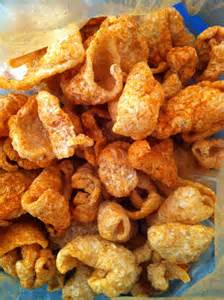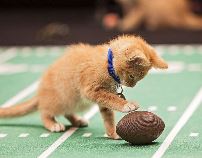 The United States Patent and Trademark has recently refused to register the trademark “Redskins Hog Rinds” for a California food company on the grounds that the mark is “disparaging” and therefore prohibited by Section 2(a) of the Lanham Act, the federal trademark statute.
The United States Patent and Trademark has recently refused to register the trademark “Redskins Hog Rinds” for a California food company on the grounds that the mark is “disparaging” and therefore prohibited by Section 2(a) of the Lanham Act, the federal trademark statute.
The ruling, handed down on December 29 by an attorney-examiner, can be appealed. The decision concluded that there was no reason to deny registration of the mark except for the fact that it was disparaging to Native Americans. The examiner reached this conclusion on the basis of dictionary definitions that identified the term as disparaging and by the opposition to the continuing usage of the term “Redskins” by a number of Native American groups, including the National Congress of American Indians and the Oneida Nation, as well as articles about Indian activist opposition to the term that appeared in the Washington Post and the magazine, Indian Country Today.
This is not the first time that the term “Redskins” has been ruled disparaging. In recent years the Washington Redskins football team has unsuccessfully attempted to register variations on its famous mark.
Presumably, if the applicant in this case had attempted to register the mark “Indian Pork Rinds,” it might have succeeded (if no one else had previously registered that mark).
Why is the term “redskins” deemed to be so much more offensive than other names for Native Americans? How did it become the R-word?
There is little doubt that many people today believe that the word “redskin” is a racial slur that has no place in public speech. However, while the historical treatment of Native Americans in culture was admittedly degrading in most respects, there is little evidence that the word “redskins” was perceived as an inherently offensive term for Native American before the late 1970’s or early 1980’s.
Traditionally, the word “redskin” was viewed as a synonym for Indian, and its usage did not carry the negative connotations that have long attached to ethnic and racial slurs like “chink,” “wetback,” “kike,” or “nigger.” Until the 1970’s, sportswriters covering teams with any type of Indian nickname used the terms “Indians,” “Braves,” and “Redskins” interchangeably without any apparent awareness that the third was more offensive than the first two.
As the Smithsonian’s Ives Goddard has demonstrated, prior to the twentieth century, Native Americans frequently used the adjective “red” in reference to themselves. In fact, the term “redskin” appears to have originated as a translation of a Native American term used to differentiate Indians from other Americans.
English language dictionaries in use as recently as the 1950’s and 1960’s reflect no acknowledgement that the term “redskin” was understood as disparaging to Native Americans. For example, the 1952 edition of the Universal Dictionary of the English Language, described “redskin” as a “Native American Indian, a Red Man” (p. 981), but makes no reference to the word being offensive. The American College Dictionary (1956 ed., p. 1016); The Grosset Webster Dictionary (1957 ed., p. 1016); and Webster’s New International Dictionary, Unabridged 2nd Edition (1957 ed., p. 2088) all define “redskin” as a “North American Indian,” again, with no indication that the term was considered offensive.
In The American Heritage Dictionary of the American Language (1969 ed., p. 1092), produced more than a decade later, the same definition is given, but with the qualification only that the term was “informal.”
In fact, the Merriam-Webster Company, the country’s leading publisher of “serious” dictionaries, did not indicate that the term was objectionable until 1983, when it added the cautionary phrase “usually taken to be offensive” to its previous definition, “A North American Indian.” (This definition appeared in the 1983 editions of Webster’s Third International Dictionary and Collegiate Dictionary, 9th Edition.)
In contrast, the same dictionaries from the 1950’s and 1960’s clearly indicate that the word “nigger” is understood to be offensive and derogatory. The comments so indicating range from “colloquial, contemptuous” (Universal Dictionary, p. 774) and “offensive” (American College Dictionary p. 820) to “substandard, now chiefly contemptuously” (Webster’s New International, p. 1651) and “vulgar” (American Heritage Dictionary p. 887). The Grosset-Webster Dictionary omitted the word altogether, presumably because it was in such bad taste.
Today, of course, the understanding is quite different. Contemporary dictionaries clearly identify the term “redskin” as disparaging. The Online Oxford Dictionary describes it as “dated and offensive.” Similarly, Merriam-Webster’s online dictionary identifies it as “usually offensive,” while the online Thefreedictionary defines it as “used as a disparaging term for a Native American,” and further classifies the term as “offensive slang.” Moreover, the word has almost completely disappeared from everyday usage, except in reference to sports teams with the “Redskins” nickname.
So, how did the word “redskin” become so offensive so relatively recently? First of all, there is nothing remarkable about a word’s meaning changing over time, especially when it has racial or ethnic connotations. In the 1950’s, it was widely believed that African-Americans preferred to be called “colored” and “Negro,” and at the same time considered the label “black” insulting. By the end of the 1960’s, the situation had definitely been reversed, with only those who were insensitive to racial issues continuing to use the traditional terms.
Moreover, beginning in the late 1960’s, the American Indian civil rights movement campaigned to convince other Americans that most of the images of Native Americans in American popular culture were wildly inaccurate and insulting. No image was more stereotypical than the image of the Plains Indian “on the warpath,” which was a staple of film and television westerns.
Because “redskins” was often the western movie’s term of choice for Native Americans and because westerns usually depicted Native Americans an “uncivilized savages” (even if heroic), the term redskin took on a secondary meaning as “savage Indians.” At least for those Americans who came to regret the traditional depictions of Native Americans, “redskin” became an unpleasant term and a reminder of the dominant culture’s insensitivity to the feelings of its aboriginal counterparts.
A second explanation comes from the fact that the word “redskin” obviously uses a color to describe a racial group. While “black” and “white” became acceptable terms in the 1960’s (and are still widely used), during the same era the practice of referring to Asians as “yellow” fell into disfavor and came to be viewed as an expression of anti-Asian racism. Social pressure to avoid “yellow” references in regard to Asians may have had an impact on public attitudes toward defining Native Americans as “red.”
In addition, there has always been something slightly disparaging about the “skins” component of the word “redskins.” “Skins” can connote images of animal pelts cut away from the body by fur hunters. While there is absolutely no basis to the frequently (and irresponsibly) repeated claim that the term “Redskins” once referred to the hides of Native Americans which could be exchanged for a bounty, there is something a little unpleasant about the similarity between “coonskin” and “deerskin” on the one hand, and “redskin” on the other.
Although the California applicant in the Redskins Pork Rinds case seems to believe that the term has market value, it seems unlikely that any newly created sports team in the 21st century will take the name “Redskins.” Pork rinds and other rural consumption items notwithstanding, the primary issue is whether or not sports teams with the name “Redskins” whose use dates back to a time when the term was not perceived as offensive should be allowed to continue.
One could argue, however, that the real issue with the Redskins is not whether or not the name is especially offensive. When George Preston Marshall named his football team the Braves in 1933 and then changed it to Redskins the following year because of a switch in stadiums, he had in mind a plan to exploit the linkage between the team and Native Americans.
However, his plan had nothing to do with intentionally insulting Native-Americans by choosing a degrading name; the plan was to exploit the Native American as a symbol of patriotism and ferocity in battle. For similar reasons, many non-Indian U.S. military units in World Wars I and II adorned their helmets with Native American symbols.
It seems to me that the focus on “disparagement” missing the real issue with Native American team names, since it is hard to argue that “Indians,” “Tribe,” “Braves,” or “Chiefs” are inherently disparaging names. The real question, at least as I see it, is whether the appropriation of Native American symbols, even with good intentions, is an inappropriate usage of someone else’s cultural property.
The NCAA has framed the issue in this way by recognizing a de facto property interest in tribal names that can be “licensed” to sports teams (like the Florida State Seminoles), if the tribe wishes to do so. Since no one can “own” generic terms like Redmen, Indians, Chiefs, and Braves, those names are off-limits to colleges.
Special thanks to Marquette University Law School alum Daniel Friedman for calling the Pork Rinds ruling to my attention.


 The
The 